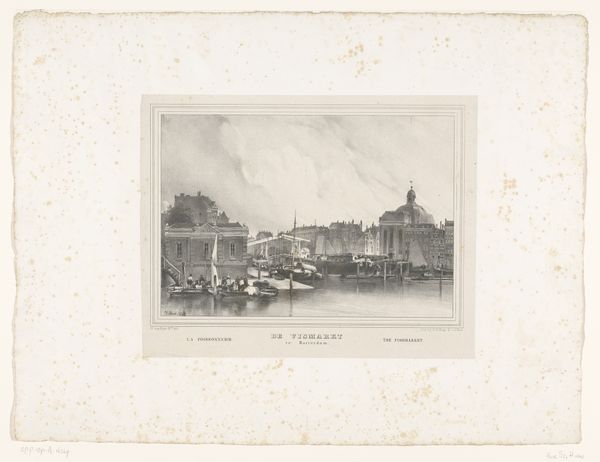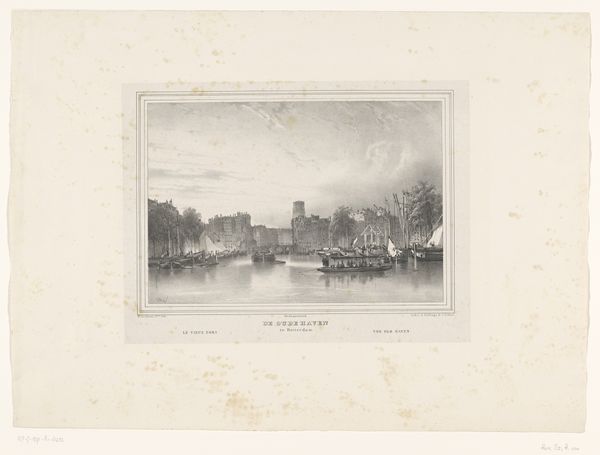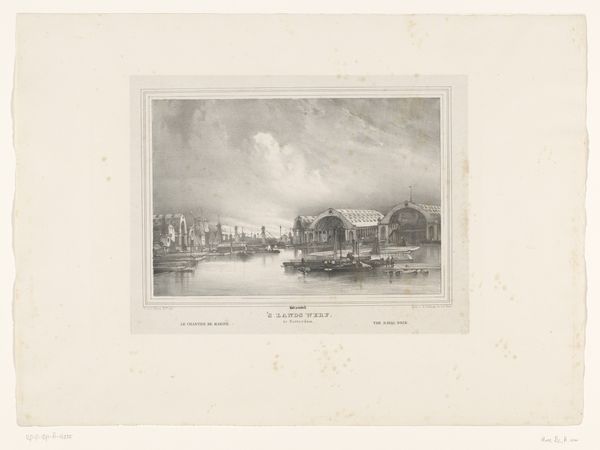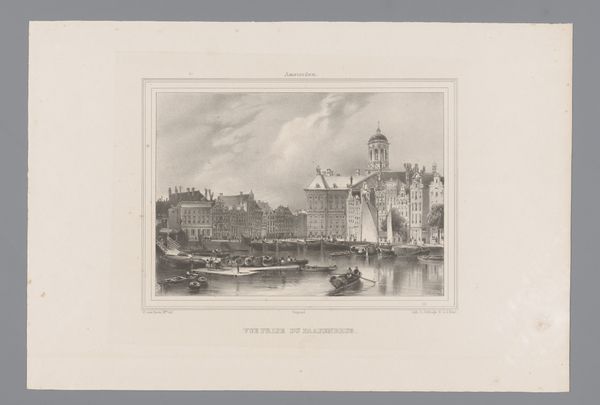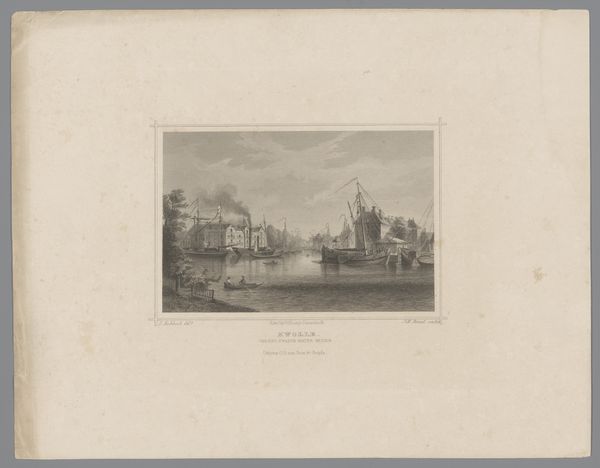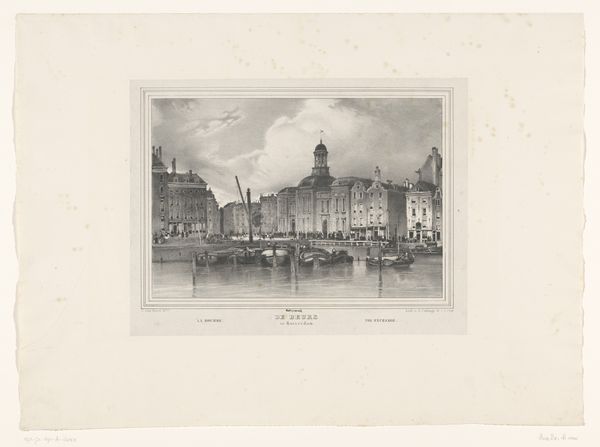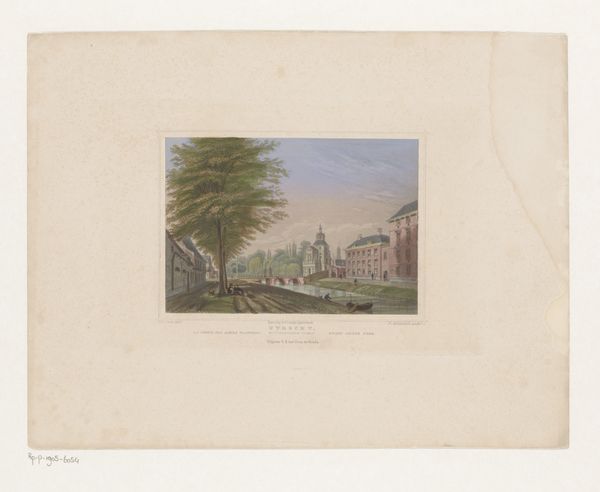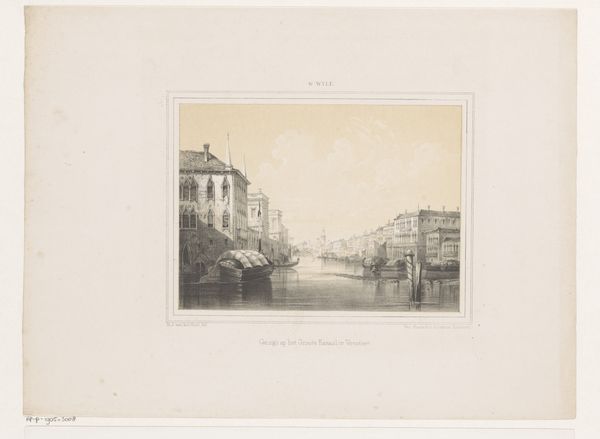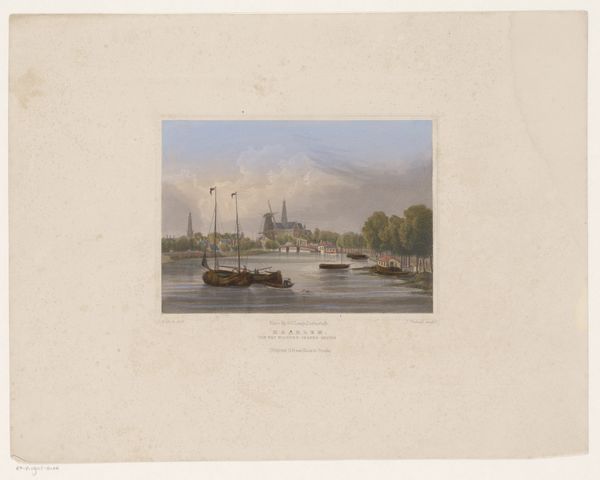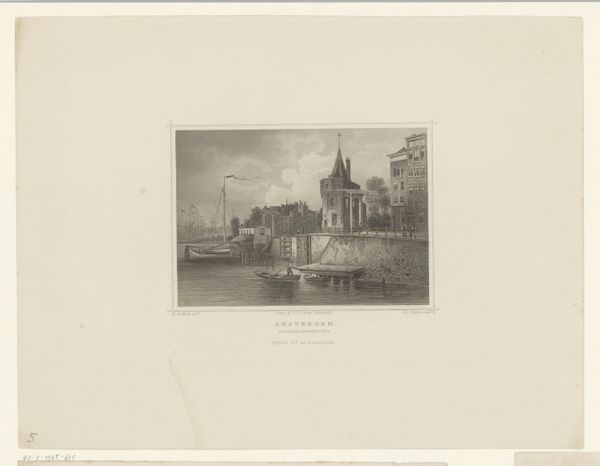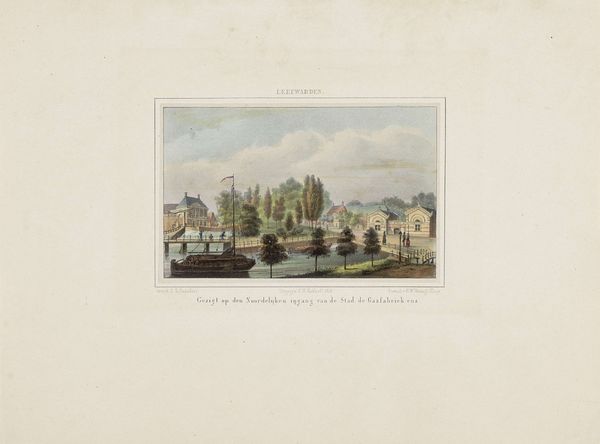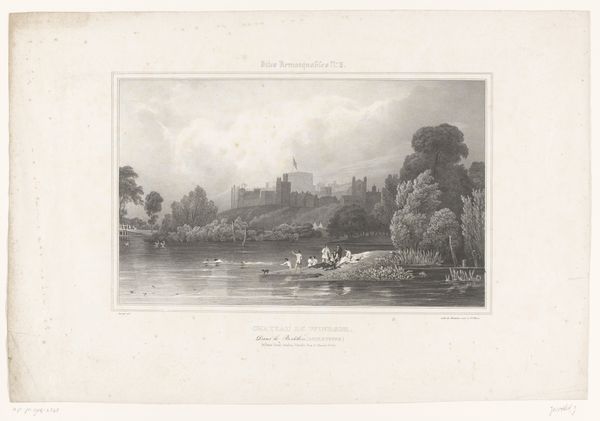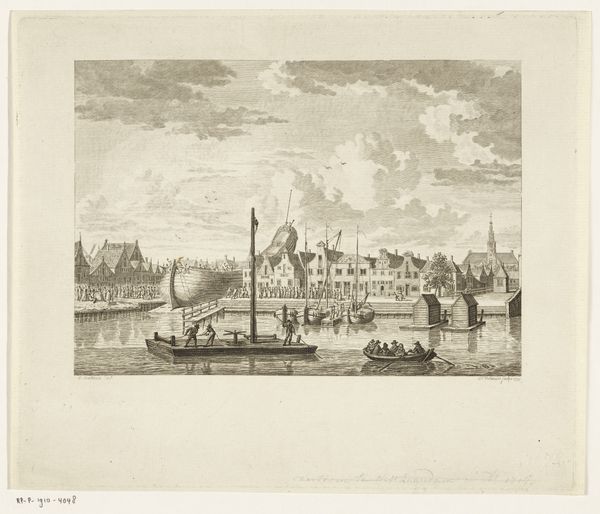
painting, watercolor
#
painting
#
landscape
#
watercolor
#
romanticism
#
cityscape
#
watercolour illustration
#
realism
Dimensions: height 109 mm, width 147 mm
Copyright: Rijks Museum: Open Domain
Editor: This is "View of Bieberich Castle near Wiesbaden" by Ernst Grünewald, sometime between 1811 and 1848, made with watercolors. It has such a delicate feel to it, a kind of wistful romanticism in the air. How would you interpret this piece? Curator: This watercolor captures a burgeoning sense of civic pride. Bieberich Castle, even depicted here with soft romanticism, represents a new ideal of enlightened governance during a period of significant socio-political transformation. Notice the strategic placement of the castle on the Rhine; what does that suggest about power and trade at that time? Editor: It suggests a very clear connection between the rulers in the castle, the river as a source of economic activity and also travel or exchange, and perhaps the people living along the banks? Curator: Precisely. The artist highlights the architectural aspirations of the ruling elite and their relationship to the community. Consider the growing interest in landscape painting at the time and the democratizing force of art. Who would have been able to afford this type of work? Editor: Maybe the emerging middle class who wanted to display their taste and knowledge about places. It’s interesting to think about how a pretty picture can also say a lot about class and who gets to participate in art! Curator: Indeed! Watercolors like these functioned within a specific social sphere, shaping the image of a location, a castle, and its inhabitants for public consumption and cementing Bieberich as an important symbol. Editor: I see how viewing art from the lens of cultural context makes the artwork relevant today!
Comments
No comments
Be the first to comment and join the conversation on the ultimate creative platform.
